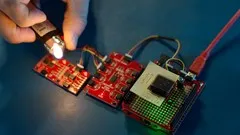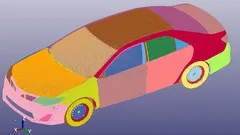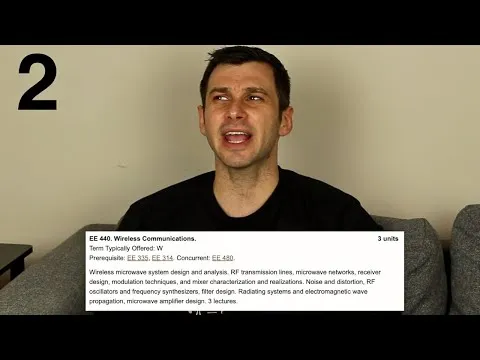
Sensors: Everything You Need To Know 
This course is perfect for anyone who wants to learn about sensors and how they work. It covers more than 40 sensors in full detail, including temperature, pressure, force, position, speed, depth, and flow sensors. You will learn how to interface a sensor with programming and electronics, and why sensors have standard output ranges. The course also explains the working principle behind each sensor, so you can recognize any sensor and know what it does. With this course, you will be able to understand why we need sensors in our lives and how to use them effectively. ▼
ADVERTISEMENT
Course Feature
![]() Cost:
Cost:
Paid
![]() Provider:
Provider:
Udemy
![]() Certificate:
Certificate:
Paid Certification
![]() Language:
Language:
English
![]() Start Date:
Start Date:
2022-11-06
Course Overview
❗The content presented here is sourced directly from Udemy platform. For comprehensive course details, including enrollment information, simply click on the 'Go to class' link on our website.
Updated in [July 18th, 2023]
What skills and knowledge will you acquire during this course?
Upon completion of this course, students will acquire the skills and knowledge to understand the basics of how sensors work, how to interface them, and their importance in our lives. They will also gain knowledge about over 40 different types of sensors, including temperature, pressure, force, position, speed, depth, and flow sensors. Additionally, students will learn how to interface sensors with programming and electronics, understand the concept of standard output ranges for sensors, and make informed decisions when purchasing sensors. Finally, they will have an understanding of the working principles of various types of sensors, enabling them to recognize any sensor and comprehend its working principle.
How does this course contribute to professional growth?
This course on sensors contributes to professional growth by providing an in-depth understanding of various types of sensors and their applications. It equips students with the knowledge and skills to interface sensors with programming and electronics, enabling them to effectively utilize sensors in their professional endeavors. Additionally, the course covers the working principles of different sensors, allowing students to recognize and comprehend the underlying principles behind any sensor they encounter. Overall, this course enhances professional growth by expanding knowledge and proficiency in the field of sensors.
Is this course suitable for preparing further education?
Yes, this course is suitable for preparing further education. The course provides a comprehensive overview of sensors and their applications, covering the basics of how sensors work and how to interface them. It also includes information on more than 40 different types of sensors, giving students a broad understanding of the field. Additionally, the course covers the working principles of various types of sensors, enabling students to recognize any sensor and understand its working principle. This knowledge and understanding will be valuable for further education in fields that involve the use of sensors, such as engineering, technology, and science.
Course Syllabus
Introduction and Getting Started
Temperature Sensors
Mechanical PRESSURE TRANSDUCERS
ELECTRICAL PRESSURE TRANSDUCERS
SPEED TRANSDUCERS
FLOW METERS
Force Sensors
Position Sensors
Depth Gauges
Who we are?
Bonus Lecture: Gifts, Coupons, and More.
Pros & Cons

Wide range of topics covered: Users appreciated the fact that the course covers a wide range of topics, including the basics of electronics, programming with the Arduino platform, communication protocols, and IoT applications. This comprehensive coverage allows learners to gain a holistic understanding of sensors.

Entertaining instructor: Users found the instructor to be very entertaining, making the learning experience enjoyable. This can help keep learners engaged and motivated throughout the course.

Low quality images and explanations: Some users mentioned that the course had low quality images and explanations. This can hinder the understanding of concepts and make it difficult for learners to grasp the content effectively.

Difficulty understanding instructor's pronunciation: A few users found it hard to understand the instructor's pronunciation. This language barrier can be a challenge for non-native English speakers or individuals who are not accustomed to the instructor's accent. It may affect the overall learning experience and comprehension of the course material.
Course Provider

Provider Udemy's Stats at AZClass
Discussion and Reviews
0.0 (Based on 0 reviews)
Explore Similar Online Courses

Variable Frequency Drives - Wire-Setup-Troubleshoot VFDs

LS DYNA - A Simulation Training with Practical Applications

Python for Informatics: Exploring Information

Social Network Analysis

Introduction to Systematic Review and Meta-Analysis

The Analytics Edge

DCO042 - Python For Informatics

Causal Diagrams: Draw Your Assumptions Before Your Conclusions

Whole genome sequencing of bacterial genomes - tools and applications

Ranking all 22 engineering classes I took in college

Industrial Instrumentation and Control Devices


Start your review of Sensors: Everything You Need To Know